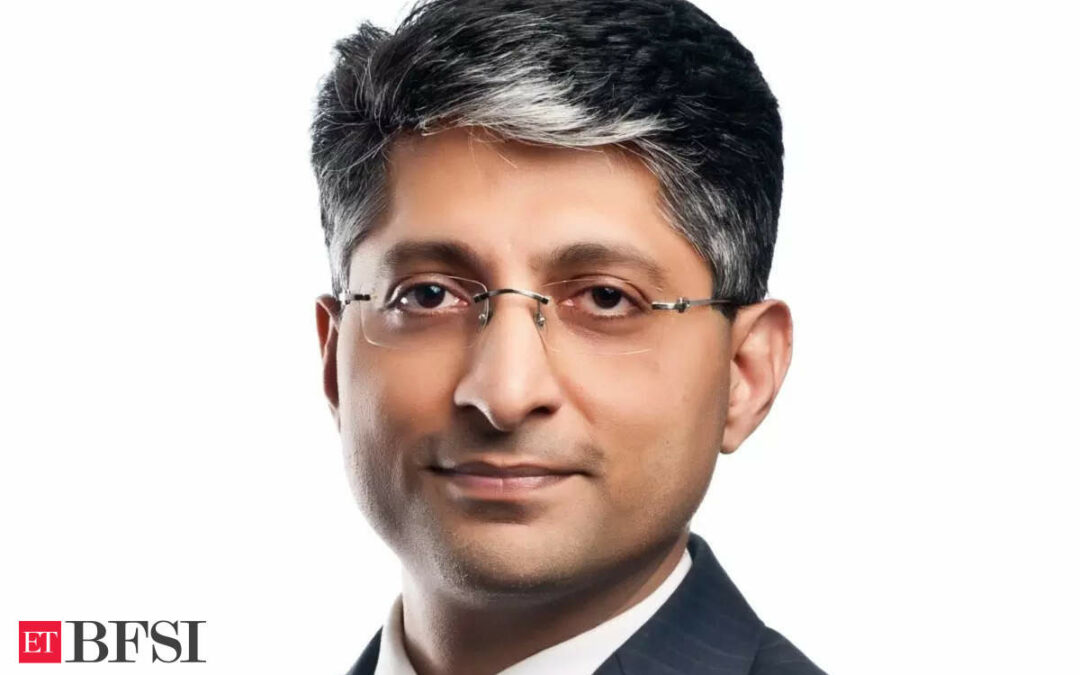Neeraj Seth, CIO & Head-APAC Fundamental Fixed Income, BlackRock, says mixed US economic data is telling us that we are in that late cycle of economic growth. The economy is slowing down, but it is a gradual slowing. It is not falling off the cliff. But trying to trade every data point becomes a challenge in this part of the cycle.
Seth further says that in the case of fixed income in Asia, he sees ongoing inflows in India, potentially higher inflows in Indonesia, to some extent Philippines, and Korea, with the potential easing in front of us. But it is not going to be broad- based inflows in every single market.
How do you read the data coming out of the US? One week, it is all pessimistic and growth is falling off the cliff and the next week we are heaving a sigh of relief. Very flip-flop on the macro front. How are you or your peers analysing this data coming in?
Neeraj Seth: You are right, the markets are trying to react to every single data point, which is normally a challenge. But given the backdrop of slowing growth in the US, in the last two weeks, there was a softer NFP at 114K with unemployment moving up and then we had a CPI print which came better than expected, in my view, at 2.9% annualised. So, the continuing disinflation paves the path for the Fed and the jobless claims were better than expected. Retail sales were also better than expected. All in all, it is mixed data that is telling us that we are in that late cycle of economic growth. The economy is slowing down, but it is a gradual slowing. It is not falling off the cliff. But trying to trade every data point becomes a challenge in this part of the cycle.
Do you finally expect rates to start coming down and could the extent of it be pretty accelerated in the US? Also, how would the emerging market read that?
Neeraj Seth: Overall, we are now at the cusp of the easing cycle which will start in the US. We do expect the Fed to start easing in September, and potentially anywhere between three or four rate cuts in the next six months. It is an important point and we have been in somewhat a restrictive territory for the last 18 months. So, we are at a point where the rates should start to ease.
Coming to the emerging market perspective, there are two aspects. The fundamental from a growth standpoint, as well as the room for the central banks to ease. The fundamentals, diverge based on which country you look at. We can talk in more specific country terms. But the second is more general, which is for the central banks and the emerging markets, and to some extent, the door opens for easing as the Fed starts to ease.
There are a number of central banks, more so in emerging part of Asia, that would be starting the rate-cutting cycle once the Fed starts to cut. So, it just opens the door for the central banks, which I do think is good news for the markets.
How would the FIIs which have been big sellers in India, mixed in China behave? How would the flows move towards EMs when accelerated cuts start in the west, led by the US?
Neeraj Seth: The flows will be positive in the local markets, in the local currency fixed income, but they will be selective. It is hard today given the divergence in the policy as well as the fundamentals of the markets that we are looking at in the emerging market complex. It is very difficult to paint everything with the same brush. We will see a selectivity among investors when the allocations come across equities and fixed incomes. So, in the case of fixed income in Asia, I expect ongoing inflows in India, potentially higher inflows in Indonesia, to some extent Philippines, and Korea, with the potential easing in front of us. But it is not going to be broad- based inflows in every single market.
Commentary is coming in from a lot of global agencies regarding India’s growth. There have been some upgrades. And then, even RBI, has been upgrading the growth estimates, which some say is slightly on the optimistic side. What is your view on India’s growth and do you think we can fare better than what the naysayers are talking about?
Neeraj Seth: I remain optimistic about India’s growth. But at the same time, when you look under the hood, there are pockets of weakness. Some parts of the economy are not growing as fast. One good news is that when you think about the capex cycle, more specifically, the infrastructure bill, which is driven through the fiscal in the country, I think that is continuing. The corporate capex has not come in as much. The retail or the consumer sector is looking okay. So, I think there is potential for growth to accelerate. But it will require further push from the government in terms of reforms, job growth and further wage growth, to accelerate from here.
How do Indian equities look? There are reluctant corrections here, 4-5% at max. Up till now, retail flows have been very strong. But when will FIIs come?
Neeraj Seth: That is a $5-trillion question given that we have seen a reasonably strong rally over the last few years in the case of India outperforming pretty much all other emerging markets. Now, from a historical valuation perspective, if you compare it to its history or the rest of the markets, Indian equities do look expensive. So, rich to maybe on the expensive, depending on which part of the equity market you are looking at, small versus large-cap, in all the different sectors. But I think the longer-term growth story is extremely strong and the potential growth will attract more foreign investors over time.
In the base case scenario, what happens is that given the strong rally, most of the time investors are looking for better entry points and hence looking for any corrections to build further positions. So, if you do see any correction, you will see potentially the foreign inflows accelerating in the Indian equity markets.
So, one can take heart from that if the correction is meaningful enough, a lot of FII flows will start coming in and they are watching India closely. You must be in your part of your research meeting a lot of corporates, listed, unlisted, engaged with the fixed income side. What are your thoughts on corporate earning outlook as far as India is concerned?
Neeraj Seth: Overall, very positive. When you think about the corporates, that is a combination of leverage, liquidity, and cash flows. Now, when you look at the balance sheets, I would say the corporate balance sheets are at the healthiest point in the last 15 years.
Since the 2008 crisis, we saw corporate capex pick up. But we did see the leverage go up in the corporate sector? It was north of 80% 10 years ago and it has de-levered, is now closer to 50% of GDP in terms of the total debt. As capacity utilisation goes up, that gives room for the corporates to go back on the capex cycle and then further accelerates the earning potential from here. We are at an interesting point where meaningful de-leveraging has happened. But most of that, I would argue, is behind us now. In some ways, we are at the cusp of the start of further capex and earning potential cycle in the case of corporates.
Cost of capital impacts earnings of India Inc, listed or unlisted, and even valuations as far as markets are concerned. What are your thoughts on the cost-of-capital cycle from here on? Will we lag West as far as the rate cut cycle is concerned? When will the first cut happen here?
Neeraj Seth: In the base case scenario, I expect RBI to move sometimes toward the end of this year, closer to December. Stepping back, if you look at where the inflation is, the last month’s data at 3.5% shows it was very positive for the central bank in terms of the room, but there was a base effect involved there.
So, if you take a more medium-term view, the inflation path, the natural rate that the RBI has talked about in their recent MPC minutes, there is room for RBI to start cutting, but there is no rush. The economy is in a very healthy state and inflation is gradually coming down, specifically the core is very well-behaved. The concern remains around food-price inflation. So, the rate cut cycle is probably not going to be as deep as the developed markets because India also did not see as much of a hike. We went from 4% to 6.5% on the policy rate.
So, in the next 12 months, we can have 75 to 100 basis points of rate cut. But in addition to that, to your point about the cost of capital, it is the rates plus the risk premium. We have seen the shrinkage in the risk premia too, which certainly helps when you think about the overall cost of debt for the corporate sector.










